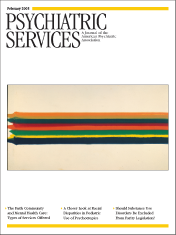Self-Cutting and Sexual Risk Among Adolescents in Intensive Psychiatric Treatment
Abstract
The purpose of this study was to identify the relationships between self-cutting, sexual abuse, and psychological variables in predicting infrequent condom use among 293 adolescents in intensive psychiatric treatment. Logistic regression analyses indicated that being female, being Caucasian, having been sexually abused, and reporting less impulse control were predictive of self-cutting. Further analysis found that those who self-cut were three and a half times more likely to report infrequent condom use than those who did not self-cut, even after the analysis controlled for sexual abuse history and HIV prevention self-efficacy. Self-cutting is strongly associated with sexual risk behaviors, and adolescents who engage in self-cutting should be assessed carefully for sexual risk behaviors.



